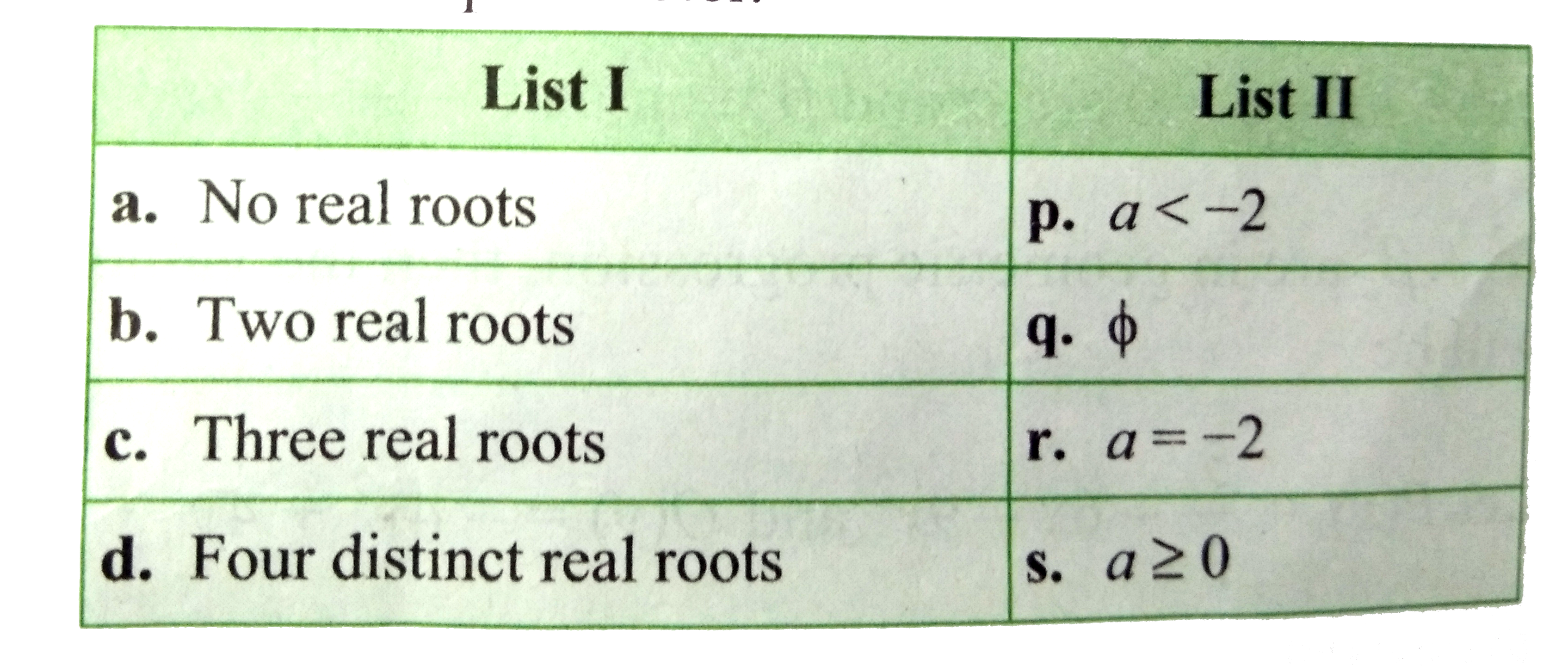If x2+52=x−2 cos (m + n) has at least one real root, the Solution in Bengali
number of possible values of x is two
number of possible values of x is one
the value of m+nis (2n+1)π
the value of m +n is 2nπ
The correct Answer is:2,3,
Given equation is
x2+5−2x=−4cos(m+mx)
⇒(x−1)2+4=−4cos(m+nx)
LHS ≥ 4 and RHS ≤ 4
So, solution is possible only if LHS =RHS = 4
∴x=1 and cos (m + n) = - 1
∴m+n=(2n+1)π,n∈1
Topper's Solved these Questions
- BOOK - CENGAGE PUBLICATIONCHAPTER - THEORY OF EQUATIONSEXERCISE - Linked Comprechension Type37videos
THEORY OF EQUATIONS
- BOOK - CENGAGE PUBLICATIONCHAPTER - THEORY OF EQUATIONSEXERCISE - MATRIX MATCH TYPE6videos
THEORY OF EQUATIONS
- BOOK - CENGAGE PUBLICATIONCHAPTER - THEORY OF EQUATIONSEXERCISE - Single Correct Answer Type : Exercise89videos
THEORY OF EQUATIONS
- BOOK - CENGAGE PUBLICATIONCHAPTER - STRAIGHT LINESEXERCISE - ARCHIVES (NUMERICAL VALUE TYPE)1videos
STRAIGHT LINES
- BOOK - CENGAGE PUBLICATIONCHAPTER - THREE DIMENSIONAL GEOMETRYEXERCISE - All Questions291videos
THREE DIMENSIONAL GEOMETRY
Similar Questions
Consider an unknow polynomial which divided by (x−3) and (x−4) leaves remainder 2 and 1, respectively. Let R(x) be the remainder when this polynomial is divided by (x−3)(x−4).
If equations R(x)=x2+ax+1 has two distint real roots, then exhaustive values of a are.02:36View SolutionMatch the following for the equation x2+a|x|+1=0 where, a is a parameter.
 02:16View Solution
02:16View SolutionThe value of expression x4−8x3+18x2−8x+2 when x=2+√3
02:29View SolutionFor a point P in the plane, let d1(P)andd2(P) be the distances of the point P from the lines x−y=0andx+y=0 respectively. The area of the region R consisting of all points P lying in the first quadrant of the plane and satisfying 2≤d1(P)+d2(P)≤4, is
02:50View SolutionFind the angle between the line whose direction cosines are given by l+m+n=0andl2+m2−n2=0.
02:50View SolutionIf pr=2(q+s) then among the equation x^(2)+px+q=0 and x^(2)+rx+s=01) both have real roots 2 both have imaginary roots 3 at least one has real roots 4 ) at least one has imaginary roots.
05:56View Solutionx^(3)+ax^(2)-bx-4=0 has (A) at least one negative root (C) one positive and one nell real roots 2 all real roots 2
02:38View SolutionThe set of values of a for which x^(2)+ax+sin^(-1)(x^(2)-4x+5)+cos^(-1)(x^(2)-4x+5)=0 has at least one real root is given by
03:08View SolutionIf x2+52=x−2 cos (m + nx) has at least one real root, the
04:44View SolutionIf the equation ax2+bx+c=x has no real roots, then the equation a(ax2+bx+c)2+b(ax2+bx+c)+c=x will have a. four real roots b. no real root c. at least two least roots d. none of these
View SolutionLet A={a∈R} the equation (1+2i)x3−2(3+i)x2+(5−4i)x+a2=0 has at least one real root. Then the value of ∑a22 is_______.
02:48View SolutionIf the equation ax2+bx+c=0 has two positive and real roots, then prove that the equation ax2+(b+6a)x+(c+3b)=0 has at least one positive real root.
05:34View SolutionIf x2+52=x−2 cos (m + n) has at least one real root, the
02:31View SolutionLet A={a∈R} the equation (1+2i)x3−2(3+i)x2+(5−4i)x+a2=0 has at least one real root. Then the value of ∑a22 is_______.
03:38View SolutionLet A=(a∈R∣. the equation (1+2i)x3−2(3+i)x2+(5− 4i) x+2a2=0) has at least one real root. Find the value of ∑a∈Aa2.
03:11View SolutionThe set of values of a for which x2+ax+sin−1(x2−4x+5)+cos−1(x2−4x+5)=0 has at least one real root is given by
06:01View Solution

